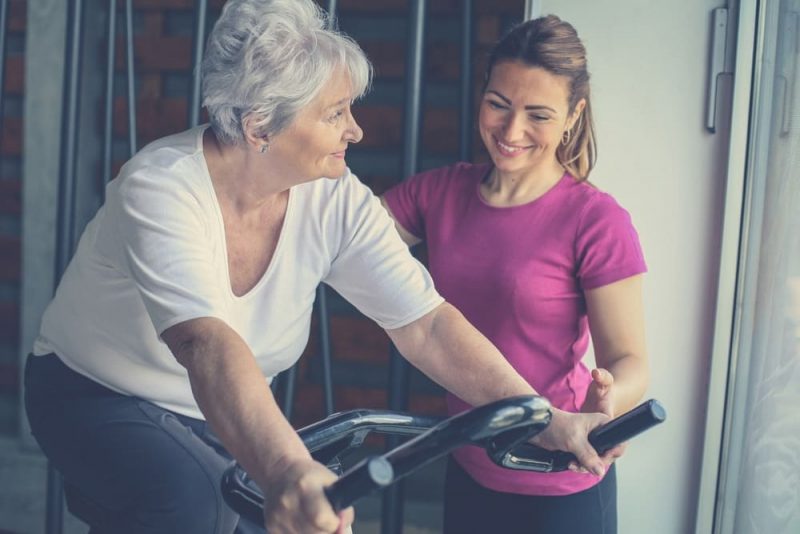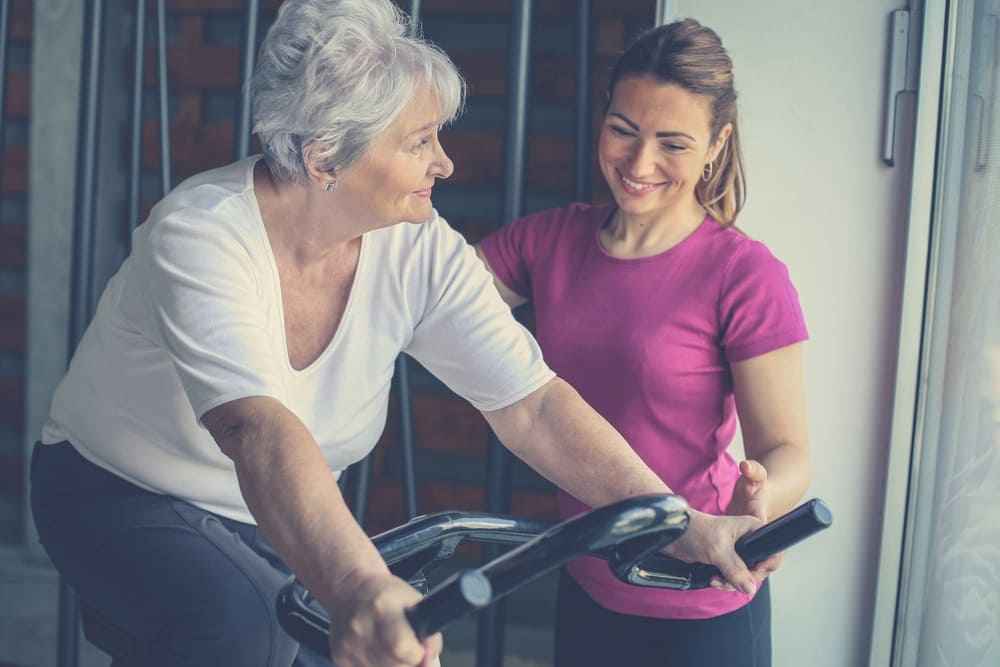Just 30 minutes of exercise increases the proportion of tumour-killing immune cells in the blood of people with breast cancer. The Finnish study, published in Frontiers in Immunology, 24 June, found that the proportion of CD8+ T cells and natural killer (NK) cells increased and the proportion of myeloid derived suppressor cells (MDSCs) decreased.
“Our results suggest that, as the proportion of CD8+ cells and NK cells increases and MDSCs decrease, the blood immune cell profile becomes more anti-tumorigenic,” lead author Tiia Koivula, from the University of Turku, Finland, tells Cancerworld. “This data highlights the fact that exercise has a positive effect on people with cancer. Together with other data we hope our study will lead to exercise playing a greater role in cancer treatment.”
A growing body of evidence shows physical activity to be associated with improved outcomes in cancer patients. Exercise is known to prevent cancer, reduce side effects of cancer treatments, and improve prognosis and patients’ quality of life. A report by the American College of Sports Medicine, published in 2019, concluded that following diagnosis cancer-specific mortality was 31% lower in physically active patients in comparison to sedentary ones. “It was previously thought that cancer patients should just rest after a cancer diagnosis. Today, we have more research information that exercise can even improve the prognosis of cancer. However, it is not yet fully known how exercise controls cancer,” says Koivula.
A study undertaken by Koivula and colleagues, published last year in Frontiers in Physiology, showed that 10 minutes of low- to moderate-intensity exercise mobilised immune cells in the circulation of patients with breast cancer and lymphoma, highlighting particular increases in levels of NK cells and cytotoxic T cells. “These are the most important cells in terms of immune surveillance against tumours. In our latest study we also included immune cells known to promote tumours rather than destroy them. In other words, we wanted to investigate whether exercise produces anti or pro tumorigenic immune responses,” explains Koivula.
Between August 2021 and May 2022, 19 women with newly diagnosed breast cancer, aged 36 to 68 years, were recruited before starting breast cancer treatment. Participants undertook 30 minutes of exercise using a cycle ergometer at a resistance of their own choosing. Prior to starting, an intravenous catheter was placed in the antecubital vein for repeated blood sampling, with the first sample taken before exercise, the second during exercise at the 15-minute time point, and the third at the 30-minute time point, when subjects finished exercise. The fourth and fifth blood samples were taken during supine recovery, 30 and 60 minutes post exercise. Flow cytometry was used to determine numbers of circulating blood cells.
Results showed that total NK cells increased by 175% after 30 minutes of exercise, and CD8+ cells increased by 36% after 15 minutes of exercise. Changes in the absolute numbers of regulatory T cells and MDSCs were not significant.
The investigators found that NK cell mobilisation correlated positively with mean arterial pressure and lactate concentration during the exercise. “Thus, it appears the higher the exercise intensity, the greater the number of NK cells mobilised into the circulation,” says Koivula.
Tumour size and HER2 positivity correlated negatively with mobilisation of NK cells, while oestrogen and progesterone receptor positivity correlated negatively with CD8+ T cell mobilisation. “However, the correlations found were not very strong and, as similar analyses have not been done before, no big conclusions can yet be drawn from them,” says Koivula.
In addition, the proportion of NK cells of total blood leukocytes increased from 6.9% at rest to 11.7% during exercise, and the proportion of MDSCs of total leukocytes decreased significantly, from 44.6% at rest to 32.9% during exercise.
“Because MDSCs are protumorigenic, it can be considered that a decrease in their proportion, and on the other hand increase in cytotoxic T and NK cells changes the blood profile towards being more cytotoxic and is thus beneficial for cancer patients,” write the authors. It is not known, they add, where white blood cells go following exercise.
However, two preclinical studies, one published in Cell Metabolism in 2016 and one published in eLife in 2020, showed that, in mice, NK cells and CD8+ cells are redistributed to the tumour site following exercise.
While it is more difficult to demonstrate whether immune cells are transported to tumours in people where you can’t easily biopsy the tumour, says Koivula, it might in future be possible using, for example, PET imaging. “If immune cells are infiltrated to tumour sites after exercise in cancer patients, as was seen in the pre-clinical mouse models, exercise could be used to potentiate the responsiveness of immunotherapy. Furthermore, as exercise increases the number of T cells, short bouts of exercise could be used to increase T cell numbers so that more T cells can be harvested for CAR T therapy.”
Exercise, she adds, is also likely to play a role in cancer prevention. “As immune cells are also mobilised in response to exercise in healthy individuals, redistribution is likely to help cells to find mutated cancer cells more effectively,” says Koivula.
- In a review just published online in the European Journal of Cancer Prevention, 26 June, Adriana Albini, the editor of Cancerworld, highlights the role that physical activity plays in cancer prevention, as well as improving the quality of life for cancer patients (attenuating side effects of chemotherapy and reducing sarcopenia), and helping cancer survivors. “The mechanisms activated by PA [physical activity] must be further investigated to understand the correct use of this intervention and to maximize its efficiency,” Albini and colleagues write. The review calls for specific guidelines to better indicate the amount of exercise needed for cancer prevention, during treatment, and for survivors. “This tool would help to prescribe effective PA to cancer patients and populations at risk and could bring a great advantage in life expectancy and quality of life,” write the authors.












